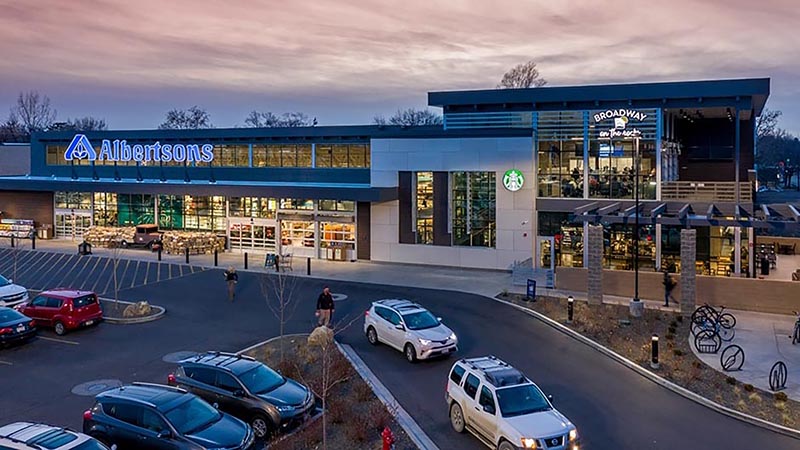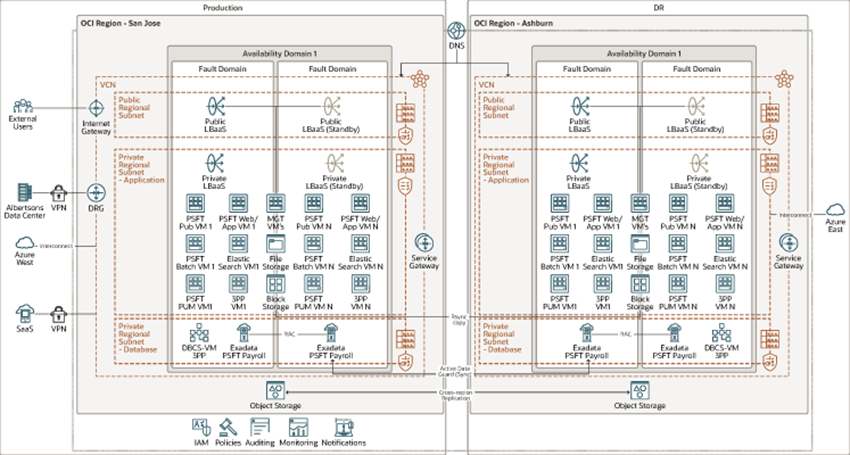
When the COVID-19 pandemic triggered lockdowns in 2020, grocery stores were one of the few businesses that experienced a significant jump in demand. With restaurants closed, consumers hit grocery stores in droves to stock up on ingredients to prepare meals at home.
United States supermarket operator Albertsons Companies was among those that experienced a significant spike in business during the health crisis. In March and April of 2020 alone, sales were up 34% compared to the previous year.
Greater demand meant Albertsons needed to expand its workforce and modernize its IT infrastructure. Fortunately, a few years prior, the company initiated a plan to move its highly customized on-premises human resource applications to the cloud. The move would give the $70 billion grocery giant a fast and cost-effective way to scale payroll for its nearly 300,000 employees.
Founded in 1939, Albertsons is the second-largest grocery chain in North America, with 2,252 stores. The corporation operates multiple subsidiaries, including Safeway, Vons, Tom Thumb, Jewel, Pavilions, Shaw’s, Star Market, Haggen, Andronico’s, and ACME.
As competition in the U.S. grocery business grows and margins shrink, stores are under increasing pressure to provide a stellar customer experience. That means they must be more agile and adaptable. Toward that end, in 2019, Albertsons Companies launched a corporate mandate to move out of its corporate data centers and modernize its technology platform with a cloud-first strategy. As part of that plan, Albertsons selected Oracle Fusion Cloud ERP and Oracle Fusion Cloud HCM, which will provide platforms for continued modernization and productivity.
Albertsons’ enterprise transformation to Oracle Cloud HCM and ERP would take about 36 months and require several implementation waves. In the meantime, the company sought an interim solution to move its legacy PeopleSoft Payroll application to the cloud quickly. Because the existing software was nearing end-of-life, the company wanted to reduce the time it took to complete its weekly payroll runs, while scaling the business as it continued to grow. Albertsons also needed to confidently adhere to a tight weekly payroll cycle for about 265,000 employees.
After evaluating several options, Albertsons decided the best path forward was to transition its existing PeopleSoft Payroll environment to Oracle Cloud Infrastructure (OCI), including moving its Oracle database to Oracle Exadata Database Service.
“The PeopleSoft expertise Oracle has and the benefits and support we would receive from the Oracle Advanced Customer Services team to help us migrate PeopleSoft to OCI was a large factor in our decision,” says Albertsons Solutions Architect Sambuddha Ghosh.
A unique virtual cloud network topology
To make its plan viable, Albertsons’ PeopleSoft Payroll application was moved to a unique multiple virtual cloud network (VCN) topology on OCI, managed by the Oracle Advanced Customer Services team.
“Working with the Oracle Advanced Customer Services team has been awesome,” says Ghosh. “Oracle helped us understand how we could successfully migrate everything that was either end of life or close to end of life. We came up with a timeline for the migration and the team provided us with updates every step of the way, which helped us plan the project effectively.”
Here’s how the new configuration works:

As the figure above illustrates, Albertsons has five VCNs. One (VCN00) is a transit VCN for external users, who can access Albertsons network on OCI from the internet and through a Web Application Firewall (WAF). From there, external users are sent to an Oracle public Load Balancer. Once inside the grocer’s public subnet, external users are routed to a WebLogic/ForgeRock Identity Gateway, which validates their single sign-on (SSO) and authorizes their access policies in an Azure Active Directory. This external transit VCN is peered to a second VCN (VCN02) for production, both of which are located in Oracle’s San Jose, California, cloud region. This production VCN is then peered to a third VCN, located in a disaster recovery and non-production cloud region in Ashburn, Virginia.
In a fourth VCN (VCN01), Albertsons internal users also connect from a site-to-site VPN, but are then moved to a private load balancer. From Albertsons’ private subnet, internal users are routed to the WebLogic/ForgeRock Identity Gateway, which validates their SSO and authorizes their access policies in an Azure Active Directory. This transit VCN is also peered to the production VCN in San Jose, which is then peered to the disaster recovery and non-production environment in Ashburn.
The fifth VCN (VCN04) is also a transit VCN and is used by OMCS personnel. These users actively manage and support the company’s OCI tenancy, and access the VCN through a site-to-site VPN, before passing through a dynamic routing gateway.
In Albertsons’ production environment, PeopleSoft Payroll applications run on eight virtual machines, and all the payroll data is stored in an Oracle Database 19c, which runs on a quarter-rack Exadata Database Service, supporting two node Oracle Real Application Clusters (RAC) to maximize availability while accessing shared storage. In the secondary region in Ashburn, two additional Exadata Database Service quarter racks support both non-production and disaster recovery environments. Oracle Data Guard replicates the database and the non-database components to disaster recovery (DR). The DR environment is deployed with the identical configuration as production, with one exception: The DR database is located on one of the Exadata Database Service servers, but shares this database with a collection of non-production environments. Albertsons chose Oracle Enterprise Database Service to support its third-party software applications, with these databases running on virtual machines.
Improving speed and flexibility
Since moving PeopleSoft to OCI in May 2021, Albertsons produces its weekly payroll 50% faster than when it ran those jobs on-premises.
“Because we run payroll weekly, it’s critical to make sure all the different divisions and groups are paid within a proper timeframe,” says Ghosh. “The Exadata migration helped us immensely on that front. We have seen a huge gain in performance and the overall time it takes to run payroll has improved significantly.”
In addition to improving the efficiency and core horsepower of its payroll processes, Albertsons can now scale OCI at predetermined times. When its non-production environments aren’t in high demand, they can be quickly powered down. When those resources are needed again, they quickly scale back up. This process allows Albertsons to optimize its OCI consumption and control costs.
Ultimately, moving its on-premises PeopleSoft Payroll workload to OCI provides Albertsons better flexibility so it can adapt quickly to sudden growth or other changes in the future. It also allows the company to focus on its longer-term migrations to Oracle Cloud HCM and ERP, providing a clear transition path to align with its new corporate cloud strategy. But perhaps mostly critically, the migration allows Albertsons to modernize its entire IT infrastructure without creating any disruptions in its payroll operations.
For more information, visit Albertsons architecture page.
